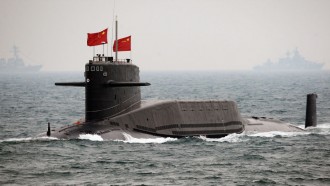A graduate student in Canada unintentionally discovered a monster that thrives underneath Canadian Arctic sea ice. Get to know the flat-headed monster and why this discovery is incredible.
Monstrillopsis Planifrons
The Monstrillopsis planifrons or "flat-headed monster" is Canada's very first true monster. It is described as having a flat forehead due to the flat protrusion on its cephalic area and is called a monster because it is a part of the Monstrilloida family.
It has eight hairy legs, furry antenna, a single weak eye, has no mouth, and odd-looking genitals. That said, they only grow to just 2 millimeters long, so this is quite the miniscule monster. In fact, as they are part of the Monstrilloida family, they are members of a family of 160 Monstrilloida species.
Samples of the tiny monster are not easy to find because they are extremely small during their larva stage, and during their parasitic stage, they dwell inside other creatures such as clams. Luckily, the woman who discovered them wasn't just in the right place at the right time, but she's also very knowledgeable in the taxonomy of small ocean creatures.
Unintentional Discovery
In 2014, University of Manitoba graduate student Aurelie Delaforge was living in an ice camp in the Canadian Arctic region to gather data for her PhD thesis regarding the causes of plankton blooms under sea ice. By fortunate circumstance, she took ocean samples on a very specific two-month window period when the "monsters" are in their adult form and are hence visible. If she had gotten samples in any other time, she could have missed them in their miniscule larvae or parasitic state.
Fortunately, the creatures kept appearing in her ocean samples, which would suggest that the creatures did not just accidentally drift into the area but are local creatures.
When she shared the "alien" that she discovered in the Canadian arctic to Department of Fisheries and Oceans researcher Wojciech Walkusz, he sent the sample to Mexico, where it was dissected by the world's leading monster identification specialist, Eduardo Suárez-Morales, who confirmed that the creature is indeed Canada's first true monster.
Important Monster
While there are 160 Monstrilloid species, this is only the second Monstrillopsis found in Arctic waters. These creatures are not easy to find and are rarely caught during plankton surveys, which is why this accidental discovery is even more incredible.
As such, this discovery brings forth important information on the life cycle of the creature in such conditions as well as the marine ecosystem in Canadian Arctic waters. Because of this discovery, further examinations in the area could lead to new records for the species.
The paper is published in ZooKeys.








